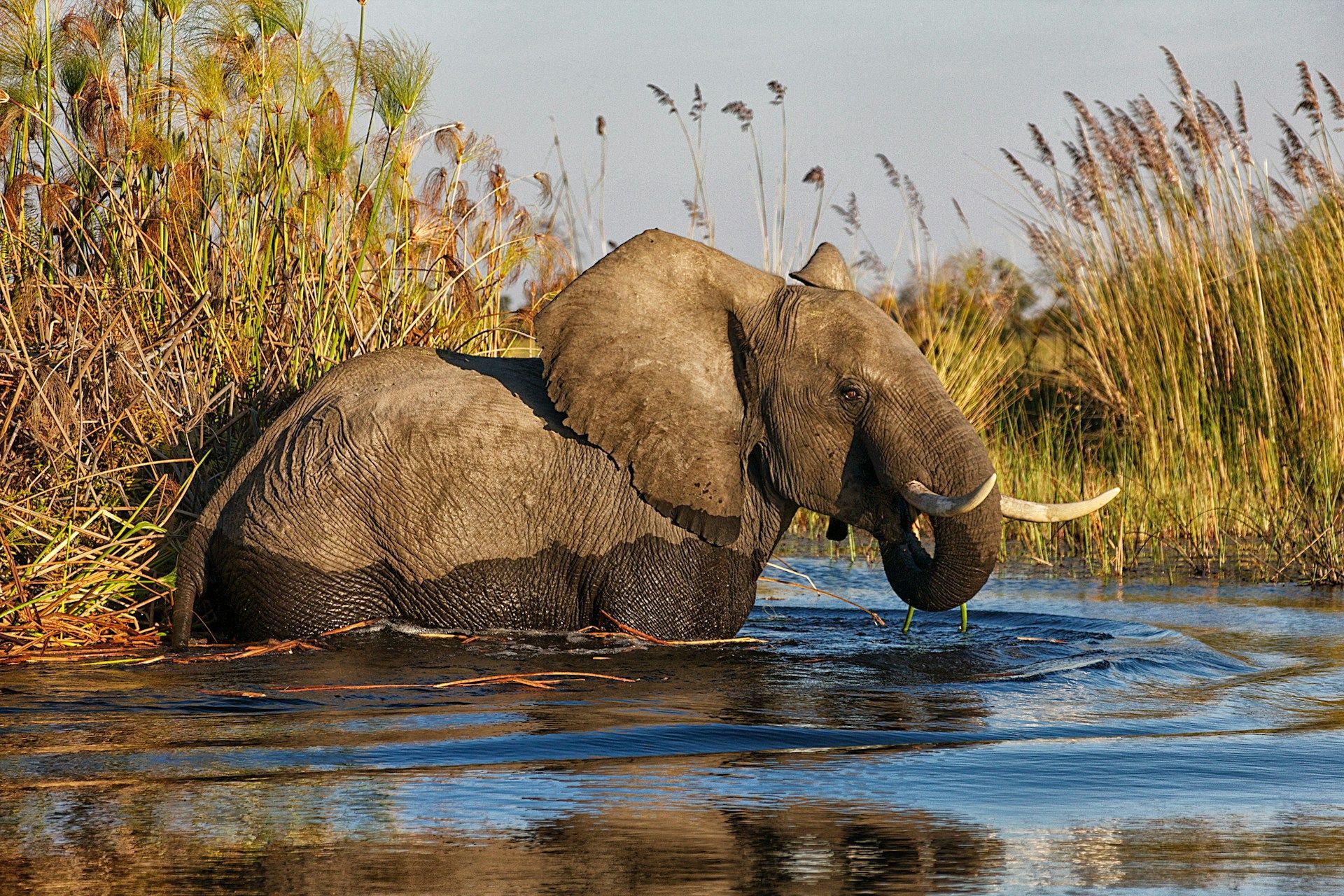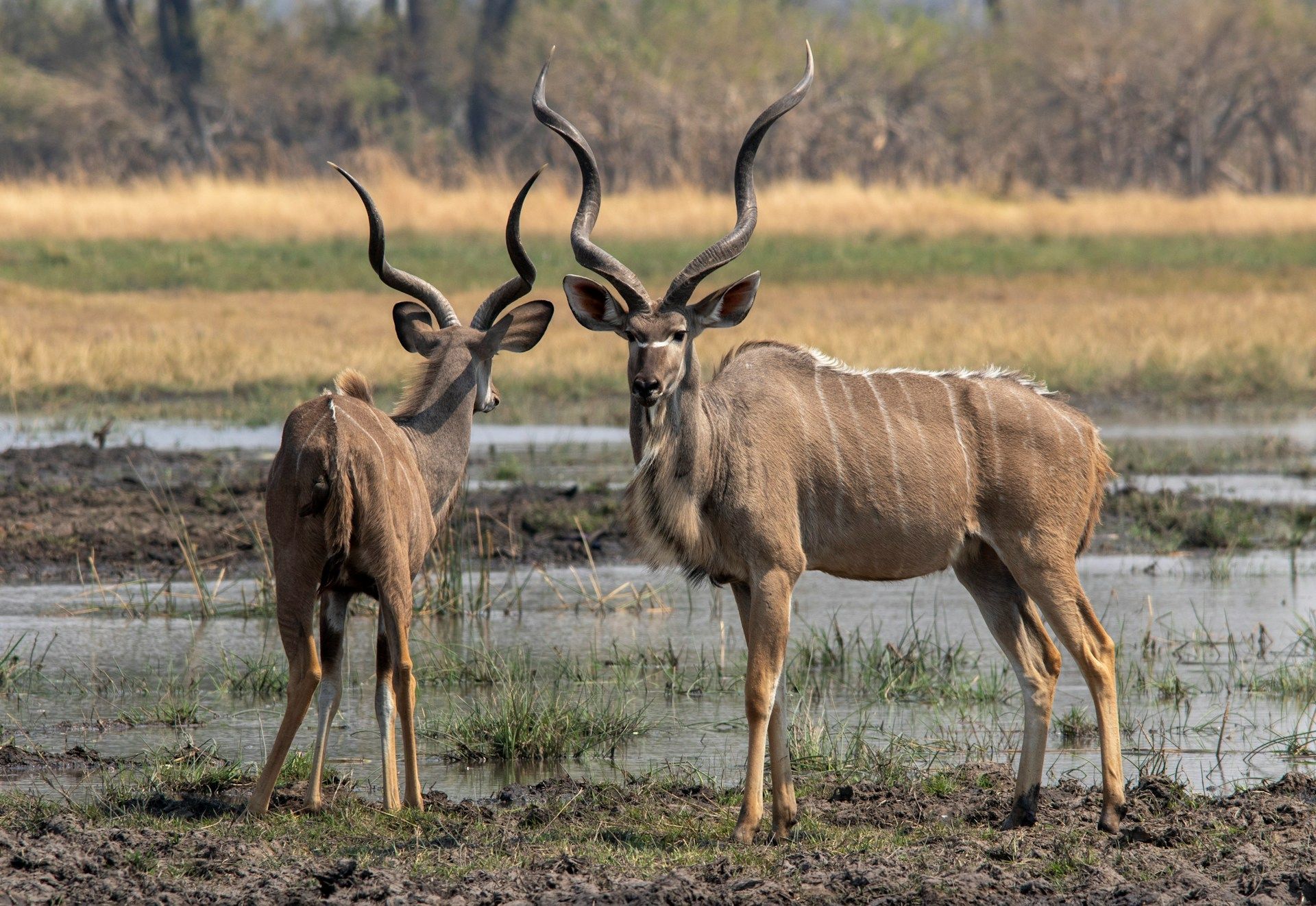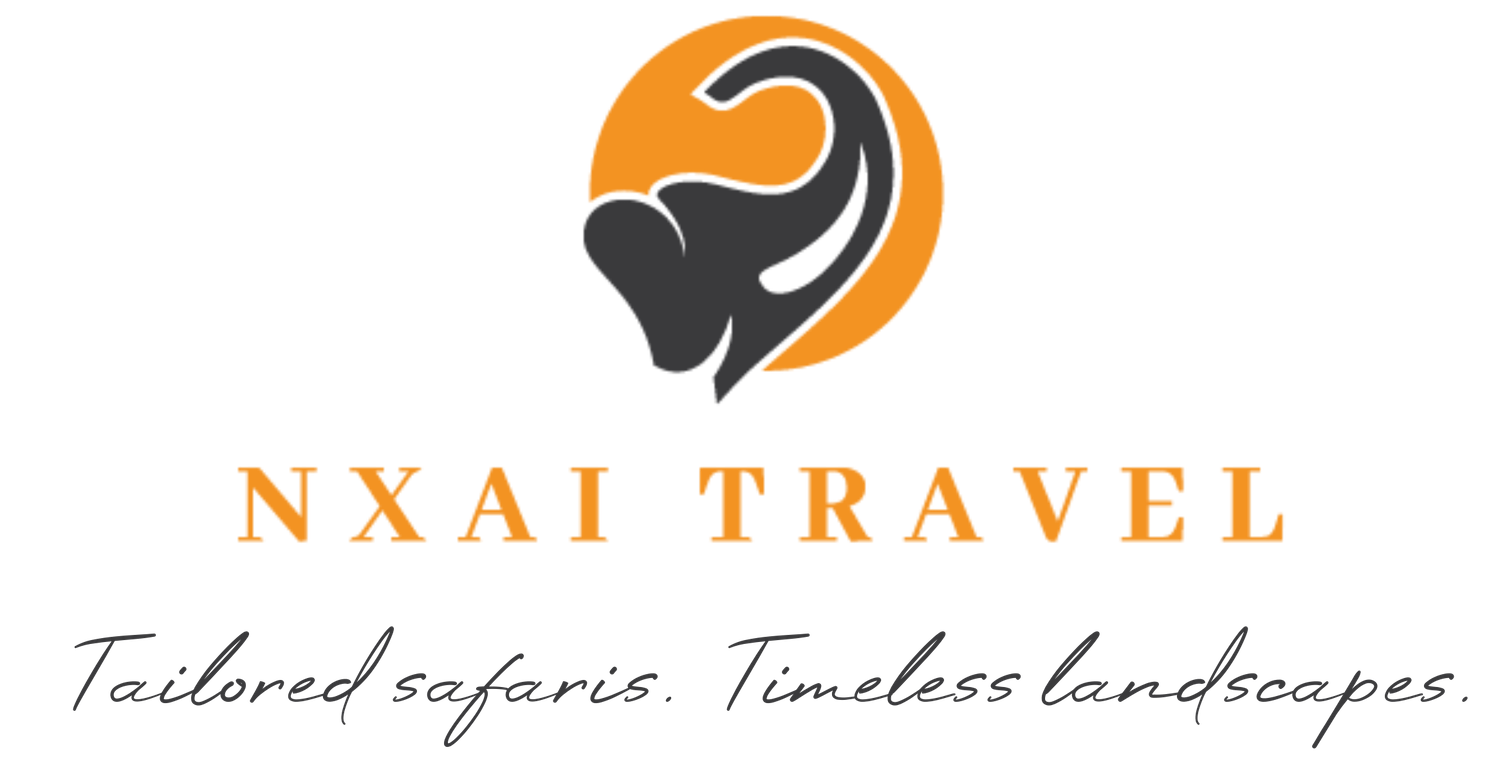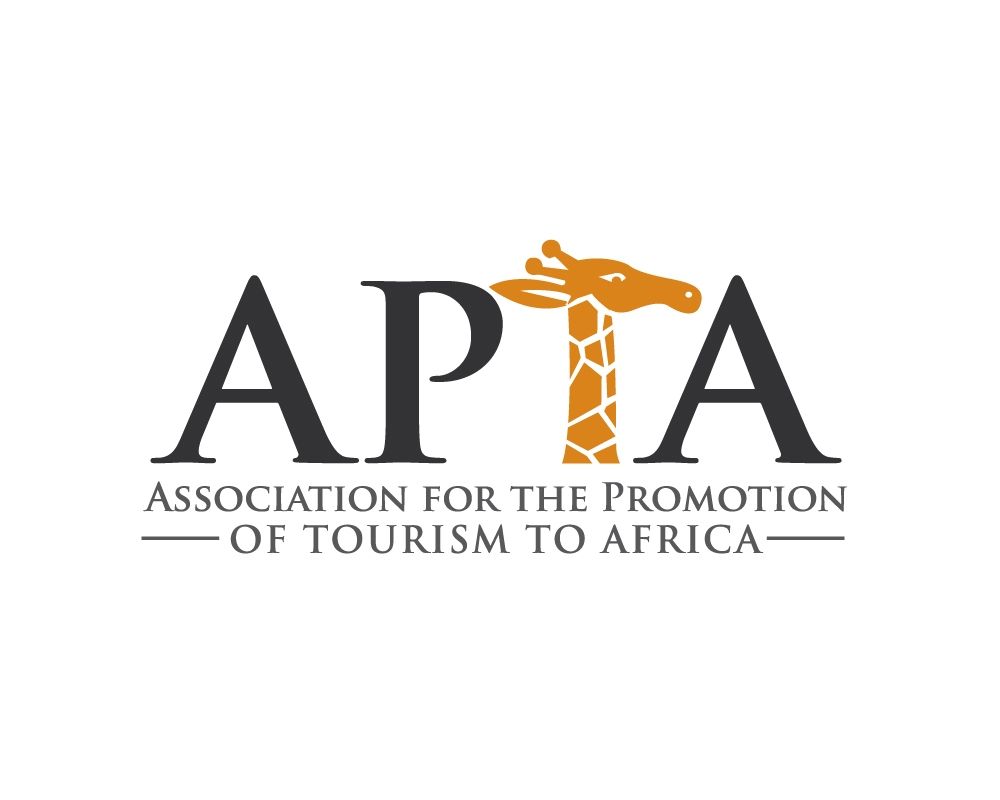The Moremi
& Khwai
The Moremi
& Khwai
The Moremi
& Khwai
The heart of the Okavango
The Moremi Game Reserve and neighbouring Khwai Community Concession lie along the eastern edge of the Okavango Delta – an iconic stretch of wilderness where water, woodland and wildlife come together in one of Africa’s most rewarding safari landscapes. This is a place of rich contrasts and deep natural rhythms. You might wake to the call of fish eagles echoing over the reeds, spend your morning tracking lion across golden floodplains, and drift into dusk watching elephants cross a river channel, bathed in the soft light of evening.
The Moremi is a conservation landmark – the first reserve in Africa established by a local community, with protection of the ecosystem and its wildlife at its heart. Just beyond its boundaries, the Khwai Concession continues that legacy. Managed by the Khwai Development Trust on behalf of the local community, this area offers a more flexible safari experience, with the freedom to explore by open safari vehicle, on foot, or by traditional mokoro canoe.
Together, Moremi and Khwai provide a seamless blend of exceptional game viewing, scenic beauty and community-driven conservation – the kind of wild, untamed safari Botswana is so rightly known for.
Why they stand out
Few areas in Southern Africa can match Moremi and Khwai for biodiversity. These are landscapes shaped by the seasonal pulse of the Okavango Delta – a dynamic flood system that transforms the land every year. As floodwaters spread across the plains, they bring fresh life. Woodlands bloom, grasses grow tall, and the wildlife follows.
Elephants are abundant year-round, especially along the riverbanks and lagoons. Buffalo herds graze the open floodplains, while giraffe browse among the acacias. Antelope are everywhere – from the delicate red lechwe and agile impala to the rare and elusive sitatunga, adapted perfectly to life in the reeds.
This richness supports a high density of predators. Lions thrive here, often seen patrolling the floodplains or resting beneath sycamore figs. Leopards are regularly spotted in the riverine thickets, and painted wolves – or African wild dogs – roam widely through the Khwai, often denning in the area between June and September.
The birdlife is no less spectacular. With both wetland and woodland species, Moremi and Khwai offer some of the best birding in Botswana. From kingfishers and bee-eaters to wattled cranes, fish eagles and even Pel’s fishing owl, it’s a twitcher’s paradise at any time of year.
Why they stand out
Few areas in Southern Africa can match Moremi and Khwai for biodiversity. These are landscapes shaped by the seasonal pulse of the Okavango Delta – a dynamic flood system that transforms the land every year. As floodwaters spread across the plains, they bring fresh life. Woodlands bloom, grasses grow tall, and the wildlife follows.
Elephants are abundant year-round, especially along the riverbanks and lagoons. Buffalo herds graze the open floodplains, while giraffe browse among the acacias. Antelope are everywhere – from the delicate red lechwe and agile impala to the rare and elusive sitatunga, adapted perfectly to life in the reeds.
This richness supports a high density of predators. Lions thrive here, often seen patrolling the floodplains or resting beneath sycamore figs. Leopards are regularly spotted in the riverine thickets, and painted wolves – or African wild dogs – roam widely through the Khwai, often denning in the area between June and September.
The birdlife is no less spectacular. With both wetland and woodland species, Moremi and Khwai offer some of the best birding in Botswana. From kingfishers and bee-eaters to wattled cranes, fish eagles and even Pel’s fishing owl, it’s a twitcher’s paradise at any time of year.
Why they stand out
Few areas in Southern Africa can match Moremi and Khwai for biodiversity. These are landscapes shaped by the seasonal pulse of the Okavango Delta – a dynamic flood system that transforms the land every year. As floodwaters spread across the plains, they bring fresh life. Woodlands bloom, grasses grow tall, and the wildlife follows.
Elephants are abundant year-round, especially along the riverbanks and lagoons. Buffalo herds graze the open floodplains, while giraffe browse among the acacias. Antelope are everywhere – from the delicate red lechwe and agile impala to the rare and elusive sitatunga, adapted perfectly to life in the reeds.
This richness supports a high density of predators. Lions thrive here, often seen patrolling the floodplains or resting beneath sycamore figs. Leopards are regularly spotted in the riverine thickets, and painted wolves – or African wild dogs – roam widely through the Khwai, often denning in the area between June and September.
The birdlife is no less spectacular. With both wetland and woodland species, Moremi and Khwai offer some of the best birding in Botswana. From kingfishers and bee-eaters to wattled cranes, fish eagles and even Pel’s fishing owl, it’s a twitcher’s paradise at any time of year.
Some background
The Moremi Game Reserve was officially designated in 1963, following a bold and visionary move by the BaTawana people of Ngamiland. Alarmed by the increasing pressure on wildlife and habitats from uncontrolled hunting and settlement, they took the unprecedented step of setting aside part of their tribal land for conservation. This made Moremi the first reserve in Africa to be established by a local community – a milestone in Botswana’s now globally respected conservation legacy.
Its name honours Chief Moremi III, a leader remembered not only for his governance but for his family’s lasting contribution to the protection of the Okavango. The reserve covers both dry land and permanent swamp – a rare combination that accounts for its extraordinary diversity.
To the northeast, the Khwai Concession extends these protected lands, forming a vital wildlife corridor between the Okavango Delta and Chobe. Once part of a controlled hunting area, Khwai has since been transformed into a community-run photographic tourism zone. The Khwai Development Trust oversees the area’s stewardship, ensuring tourism benefits flow directly back into local hands.
This relationship between people and land gives Khwai a special character. It’s not just about wildlife – though there’s plenty – but about safari that actively contributes to conservation and community wellbeing. Staying here means supporting that balance. Travelling here means understanding that wild places thrive best when those who live alongside them are part of the story.
Some background
The Moremi Game Reserve was officially designated in 1963, following a bold and visionary move by the BaTawana people of Ngamiland. Alarmed by the increasing pressure on wildlife and habitats from uncontrolled hunting and settlement, they took the unprecedented step of setting aside part of their tribal land for conservation. This made Moremi the first reserve in Africa to be established by a local community – a milestone in Botswana’s now globally respected conservation legacy.
Its name honours Chief Moremi III, a leader remembered not only for his governance but for his family’s lasting contribution to the protection of the Okavango. The reserve covers both dry land and permanent swamp – a rare combination that accounts for its extraordinary diversity.
To the northeast, the Khwai Concession extends these protected lands, forming a vital wildlife corridor between the Okavango Delta and Chobe. Once part of a controlled hunting area, Khwai has since been transformed into a community-run photographic tourism zone. The Khwai Development Trust oversees the area’s stewardship, ensuring tourism benefits flow directly back into local hands.
This relationship between people and land gives Khwai a special character. It’s not just about wildlife – though there’s plenty – but about safari that actively contributes to conservation and community wellbeing. Staying here means supporting that balance. Travelling here means understanding that wild places thrive best when those who live alongside them are part of the story.
Some background
The Moremi Game Reserve was officially designated in 1963, following a bold and visionary move by the BaTawana people of Ngamiland. Alarmed by the increasing pressure on wildlife and habitats from uncontrolled hunting and settlement, they took the unprecedented step of setting aside part of their tribal land for conservation. This made Moremi the first reserve in Africa to be established by a local community – a milestone in Botswana’s now globally respected conservation legacy.
Its name honours Chief Moremi III, a leader remembered not only for his governance but for his family’s lasting contribution to the protection of the Okavango. The reserve covers both dry land and permanent swamp – a rare combination that accounts for its extraordinary diversity.
To the northeast, the Khwai Concession extends these protected lands, forming a vital wildlife corridor between the Okavango Delta and Chobe. Once part of a controlled hunting area, Khwai has since been transformed into a community-run photographic tourism zone. The Khwai Development Trust oversees the area’s stewardship, ensuring tourism benefits flow directly back into local hands.
This relationship between people and land gives Khwai a special character. It’s not just about wildlife – though there’s plenty – but about safari that actively contributes to conservation and community wellbeing. Staying here means supporting that balance. Travelling here means understanding that wild places thrive best when those who live alongside them are part of the story.
Moremi
National Park
Covering roughly one-third of the eastern Okavango Delta, Moremi is a sanctuary of extraordinary contrasts – permanent water channels winding through dry woodland, wide open floodplains dotted with antelope, and lush lagoons alive with birdsong. Its mix of habitats supports an exceptional variety of species, from elephants, leopards and red lechwe to rare water-loving antelope like sitatunga.
Moremi is particularly well-known for predator sightings. Lions are regularly encountered on the open plains, and leopard sightings in the riverine forests are among the most reliable in Botswana. The park also provides safe breeding grounds for wild dogs – one of the most endangered carnivores in Africa.
Although governed by national park rules – which means no off-road driving or night safaris – Moremi’s sheer density of wildlife, matched with its scenic diversity, makes it one of Botswana’s most iconic safari destinations.
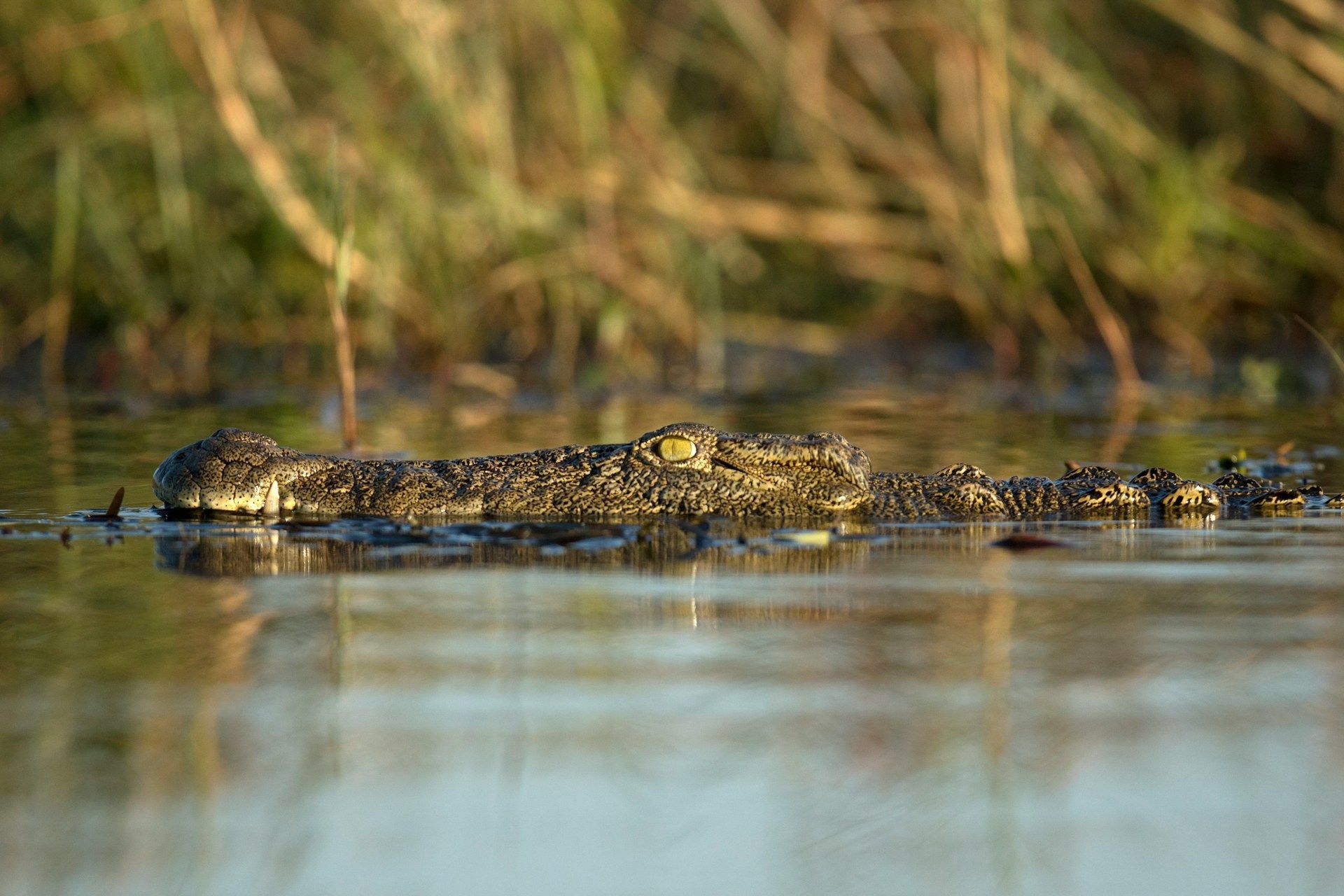
Moremi
National Park
Covering roughly one-third of the eastern Okavango Delta, Moremi is a sanctuary of extraordinary contrasts – permanent water channels winding through dry woodland, wide open floodplains dotted with antelope, and lush lagoons alive with birdsong. Its mix of habitats supports an exceptional variety of species, from elephants, leopards and red lechwe to rare water-loving antelope like sitatunga.
Moremi is particularly well-known for predator sightings. Lions are regularly encountered on the open plains, and leopard sightings in the riverine forests are among the most reliable in Botswana. The park also provides safe breeding grounds for wild dogs – one of the most endangered carnivores in Africa.
Although governed by national park rules – which means no off-road driving or night safaris – Moremi’s sheer density of wildlife, matched with its scenic diversity, makes it one of Botswana’s most iconic safari destinations.

Moremi
National Park
Covering roughly one-third of the eastern Okavango Delta, Moremi is a sanctuary of extraordinary contrasts – permanent water channels winding through dry woodland, wide open floodplains dotted with antelope, and lush lagoons alive with birdsong. Its mix of habitats supports an exceptional variety of species, from elephants, leopards and red lechwe to rare water-loving antelope like sitatunga.
Moremi is particularly well-known for predator sightings. Lions are regularly encountered on the open plains, and leopard sightings in the riverine forests are among the most reliable in Botswana. The park also provides safe breeding grounds for wild dogs – one of the most endangered carnivores in Africa.
Although governed by national park rules – which means no off-road driving or night safaris – Moremi’s sheer density of wildlife, matched with its scenic diversity, makes it one of Botswana’s most iconic safari destinations.

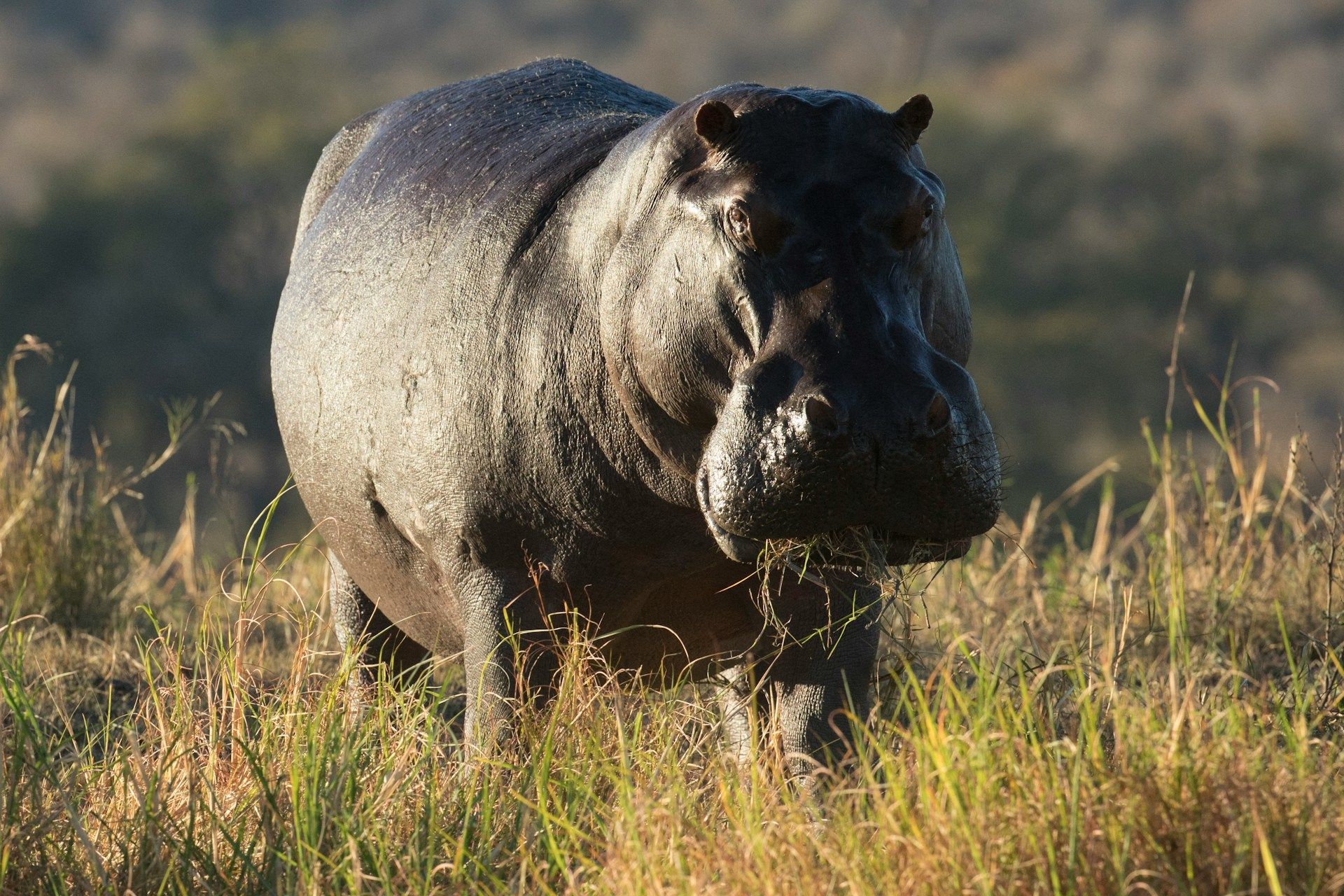
Khwai Community Concession
Just beyond Moremi’s boundaries, the Khwai Concession offers a more flexible and immersive safari experience. Here, guided walks, night drives and off-road exploration are all possible – giving guests a more intimate connection to the landscape and its inhabitants.
Khwai’s habitats are just as rich, encompassing seasonal floodplains, permanent river channels, mopane woodland and open grassland. Elephants and buffalo are ever-present, while hippos and crocodiles fill the deeper waterholes and channels. The Khwai River acts as a magnet for wildlife year-round, especially in the dry season, and predators follow closely – lion, leopard and wild dog all thrive here.
This is also one of the best areas for spotting elusive nocturnal creatures such as servals, civets and genets, thanks to the allowance of night drives. Because the concession is community-run, guests can be sure that their presence directly contributes to conservation, employment and infrastructure development in the local villages.

Khwai Community Concession
Just beyond Moremi’s boundaries, the Khwai Concession offers a more flexible and immersive safari experience. Here, guided walks, night drives and off-road exploration are all possible – giving guests a more intimate connection to the landscape and its inhabitants.
Khwai’s habitats are just as rich, encompassing seasonal floodplains, permanent river channels, mopane woodland and open grassland. Elephants and buffalo are ever-present, while hippos and crocodiles fill the deeper waterholes and channels. The Khwai River acts as a magnet for wildlife year-round, especially in the dry season, and predators follow closely – lion, leopard and wild dog all thrive here.
This is also one of the best areas for spotting elusive nocturnal creatures such as servals, civets and genets, thanks to the allowance of night drives. Because the concession is community-run, guests can be sure that their presence directly contributes to conservation, employment and infrastructure development in the local villages.

Khwai Community Concession
Just beyond Moremi’s boundaries, the Khwai Concession offers a more flexible and immersive safari experience. Here, guided walks, night drives and off-road exploration are all possible – giving guests a more intimate connection to the landscape and its inhabitants.
Khwai’s habitats are just as rich, encompassing seasonal floodplains, permanent river channels, mopane woodland and open grassland. Elephants and buffalo are ever-present, while hippos and crocodiles fill the deeper waterholes and channels. The Khwai River acts as a magnet for wildlife year-round, especially in the dry season, and predators follow closely – lion, leopard and wild dog all thrive here.
This is also one of the best areas for spotting elusive nocturnal creatures such as servals, civets and genets, thanks to the allowance of night drives. Because the concession is community-run, guests can be sure that their presence directly contributes to conservation, employment and infrastructure development in the local villages.
What kind of safari to expect
This is classic Okavango safari country – wild, dynamic and incredibly scenic. The experience here changes dramatically with the seasons, but each one offers its own rewards.
During the dry winter months from May to October, the delta is in full flood. Channels, lagoons and floodplains swell with water, attracting large numbers of animals to the permanent sources of food and moisture. Game viewing is at its easiest now, with high visibility and cooler days. It’s also the best time to enjoy boat cruises and mokoro excursions, when water levels are high and the landscape is at its most photogenic.
When the rains come from November to March, the land transforms. Grasslands turn green, trees leaf out, and migratory birds arrive in their thousands. This is the calving season too – a time of abundance, movement and drama as predators take advantage of vulnerable newborns. It’s an exciting time for photographers and safari-goers alike, with shifting light, dramatic skies and fewer vehicles on the roads.
In Moremi, safaris take place within the rules of the reserve – no off-road driving or walking is allowed – but the density of game more than makes up for it. In Khwai, the community-managed concession allows more flexibility, including night drives and walking safaris, adding a layer of intimacy and adventure to the experience.
What kind of safari to expect
This is classic Okavango safari country – wild, dynamic and incredibly scenic. The experience here changes dramatically with the seasons, but each one offers its own rewards.
During the dry winter months from May to October, the delta is in full flood. Channels, lagoons and floodplains swell with water, attracting large numbers of animals to the permanent sources of food and moisture. Game viewing is at its easiest now, with high visibility and cooler days. It’s also the best time to enjoy boat cruises and mokoro excursions, when water levels are high and the landscape is at its most photogenic.
When the rains come from November to March, the land transforms. Grasslands turn green, trees leaf out, and migratory birds arrive in their thousands. This is the calving season too – a time of abundance, movement and drama as predators take advantage of vulnerable newborns. It’s an exciting time for photographers and safari-goers alike, with shifting light, dramatic skies and fewer vehicles on the roads.
In Moremi, safaris take place within the rules of the reserve – no off-road driving or walking is allowed – but the density of game more than makes up for it. In Khwai, the community-managed concession allows more flexibility, including night drives and walking safaris, adding a layer of intimacy and adventure to the experience.
What kind of safari to expect
This is classic Okavango safari country – wild, dynamic and incredibly scenic. The experience here changes dramatically with the seasons, but each one offers its own rewards.
During the dry winter months from May to October, the delta is in full flood. Channels, lagoons and floodplains swell with water, attracting large numbers of animals to the permanent sources of food and moisture. Game viewing is at its easiest now, with high visibility and cooler days. It’s also the best time to enjoy boat cruises and mokoro excursions, when water levels are high and the landscape is at its most photogenic.
When the rains come from November to March, the land transforms. Grasslands turn green, trees leaf out, and migratory birds arrive in their thousands. This is the calving season too – a time of abundance, movement and drama as predators take advantage of vulnerable newborns. It’s an exciting time for photographers and safari-goers alike, with shifting light, dramatic skies and fewer vehicles on the roads.
In Moremi, safaris take place within the rules of the reserve – no off-road driving or walking is allowed – but the density of game more than makes up for it. In Khwai, the community-managed concession allows more flexibility, including night drives and walking safaris, adding a layer of intimacy and adventure to the experience.
Things to do and see
Moremi and Khwai are made for exploration. Game drives in open safari vehicles allow you to move through woodland, wetland and open plain in a single day, with wildlife at every turn. Whether you’re watching elephants feed among the reeds, following a leopard’s tracks through the sand, or observing the social dynamics of a wild dog pack, the sense of immersion is immediate and powerful.
In Khwai, you can also head out on foot with an experienced guide, tracking the movements of animals and reading the signs of the bush. These walks reveal a different kind of magic – the smaller stories of the wild: the trail of a civet, the tracks of a porcupine, the call of a honeyguide.
Water-based safaris offer a uniquely tranquil perspective. A mokoro trip through the reed-fringed channels is quiet, slow and completely absorbing – a chance to move through the landscape as the delta’s wildlife does. Boat cruises, available in high-water months, are ideal for photography and birdwatching, especially at sunrise and sunset.
Night drives in Khwai bring another dimension, revealing the nocturnal side of the bush. Eyeshine flashes in the torchlight. Hyenas call in the distance. You might encounter genets, bush babies or even the rarely seen serval slipping through the grasses.
Things to do and see
Moremi and Khwai are made for exploration. Game drives in open safari vehicles allow you to move through woodland, wetland and open plain in a single day, with wildlife at every turn. Whether you’re watching elephants feed among the reeds, following a leopard’s tracks through the sand, or observing the social dynamics of a wild dog pack, the sense of immersion is immediate and powerful.
In Khwai, you can also head out on foot with an experienced guide, tracking the movements of animals and reading the signs of the bush. These walks reveal a different kind of magic – the smaller stories of the wild: the trail of a civet, the tracks of a porcupine, the call of a honeyguide.
Water-based safaris offer a uniquely tranquil perspective. A mokoro trip through the reed-fringed channels is quiet, slow and completely absorbing – a chance to move through the landscape as the delta’s wildlife does. Boat cruises, available in high-water months, are ideal for photography and birdwatching, especially at sunrise and sunset.
Night drives in Khwai bring another dimension, revealing the nocturnal side of the bush. Eyeshine flashes in the torchlight. Hyenas call in the distance. You might encounter genets, bush babies or even the rarely seen serval slipping through the grasses.
Things to do and see
Moremi and Khwai are made for exploration. Game drives in open safari vehicles allow you to move through woodland, wetland and open plain in a single day, with wildlife at every turn. Whether you’re watching elephants feed among the reeds, following a leopard’s tracks through the sand, or observing the social dynamics of a wild dog pack, the sense of immersion is immediate and powerful.
In Khwai, you can also head out on foot with an experienced guide, tracking the movements of animals and reading the signs of the bush. These walks reveal a different kind of magic – the smaller stories of the wild: the trail of a civet, the tracks of a porcupine, the call of a honeyguide.
Water-based safaris offer a uniquely tranquil perspective. A mokoro trip through the reed-fringed channels is quiet, slow and completely absorbing – a chance to move through the landscape as the delta’s wildlife does. Boat cruises, available in high-water months, are ideal for photography and birdwatching, especially at sunrise and sunset.
Night drives in Khwai bring another dimension, revealing the nocturnal side of the bush. Eyeshine flashes in the torchlight. Hyenas call in the distance. You might encounter genets, bush babies or even the rarely seen serval slipping through the grasses.
Why choose the Moremi and Khwai
For travellers seeking the true spirit of the Okavango, this region delivers in every way. The biodiversity is exceptional, the landscapes are ever-changing, and the opportunities for meaningful, conservation-focused travel are among the best in Botswana.
Here, community and wilderness work together. Luxury camps sit lightly on the land. Safaris unfold in silence and stillness, with just the sounds of the wild for company. From thrilling predator sightings to peaceful mokoro glides, the Moremi and Khwai offer a safari experience that’s both classic and deeply personal – the perfect expression of Botswana’s wild heart.
Why choose the Moremi and Khwai
For travellers seeking the true spirit of the Okavango, this region delivers in every way. The biodiversity is exceptional, the landscapes are ever-changing, and the opportunities for meaningful, conservation-focused travel are among the best in Botswana.
Here, community and wilderness work together. Luxury camps sit lightly on the land. Safaris unfold in silence and stillness, with just the sounds of the wild for company. From thrilling predator sightings to peaceful mokoro glides, the Moremi and Khwai offer a safari experience that’s both classic and deeply personal – the perfect expression of Botswana’s wild heart.
Why choose the Moremi and Khwai
For travellers seeking the true spirit of the Okavango, this region delivers in every way. The biodiversity is exceptional, the landscapes are ever-changing, and the opportunities for meaningful, conservation-focused travel are among the best in Botswana.
Here, community and wilderness work together. Luxury camps sit lightly on the land. Safaris unfold in silence and stillness, with just the sounds of the wild for company. From thrilling predator sightings to peaceful mokoro glides, the Moremi and Khwai offer a safari experience that’s both classic and deeply personal – the perfect expression of Botswana’s wild heart.
